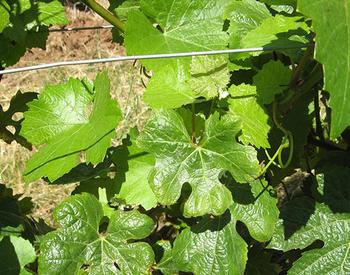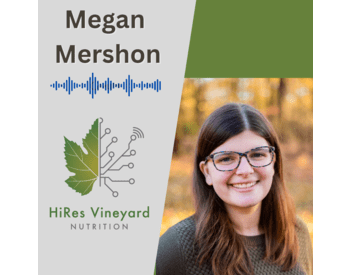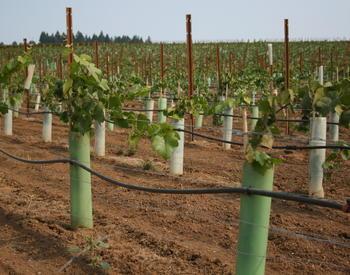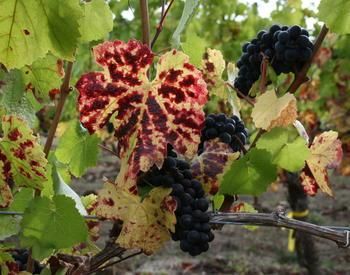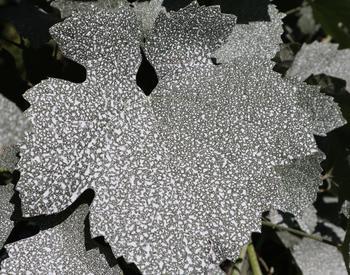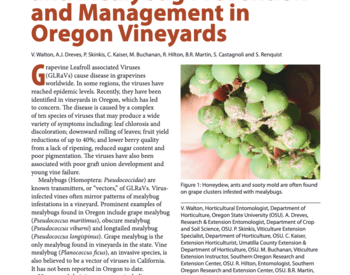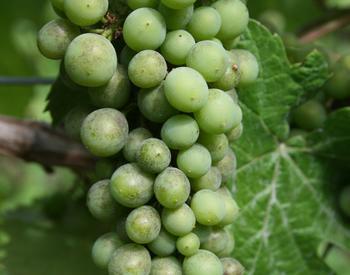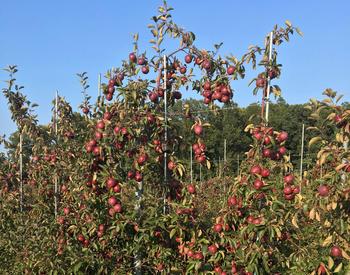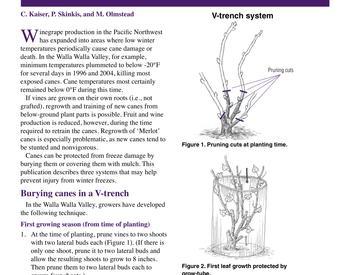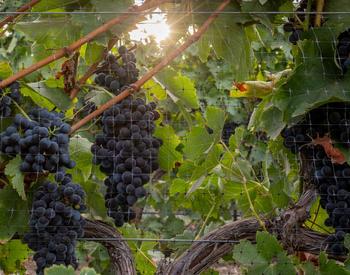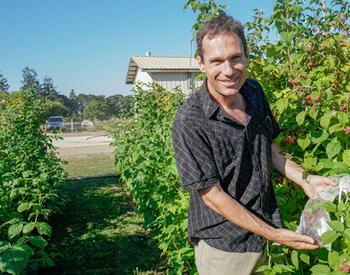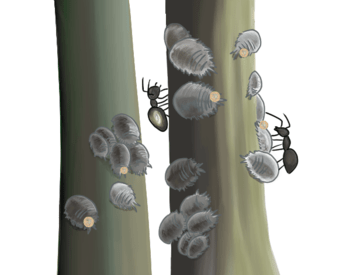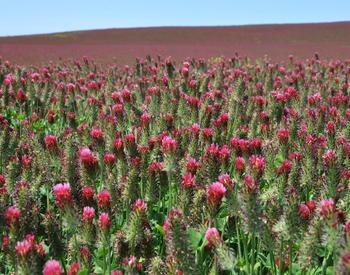Transcript
00:00:00 Patty Skinkis
This is the High-Res Vineyard Nutrition Podcast Series, devoted to helping the grape and wine industry understand more about how to monitor and manage vineyard health through grapevine nutrition research. I am your host, Dr. Patty Skinkis, Professor and Viticulture Extension Specialist at Oregon State University.
00:00:23 Patty Skinkis
A major goal of the HighRes Vineyard nutrition project is to understand vineyard nutrition better and to develop tools that can be used to make grower monitoring of their vineyards more efficient. During our first season of the podcast we got into the basics of how we engineer sensors. Namely the spectral analyses for vineyard nutrient monitoring. However, during season 2 this season we're digging deeper into the research to understand how systems and tools are developed specifically to meet process needs in the vineyard. We recognize that grape growers need more than just a tool for determining what nutritional deficiencies exist and that they meet may need other tools that are just as important or possibly more important in their day-to-day decision making or in getting the job done. Recognizing the importance of these different tools I decided to invite Dr. Manoj Karkee to talk to us today since he has projects in several different areas that are useful to vineyard managers and he's developing sensors and control technologies for automation and robotics. He is a professor in the department of Biological Systems Engineering at Washington State University and as a project collaborator on the high res vineyard nutrition project. He's been working on some really important projects for the Washington tree fruit industry including automated harvest and drone technology to scare off birds for small fruit producers and vineyards and some yield estimation technology for tree fruits and grapes and he also is working on some precision shoot thinning procedures ss well as working on vineyard nutrient monitoring. Thank you for joining us today, Manoj.
00:02:07 Manoj Karkee
Thank you very much Patty and really appreciate giving this opportunity to me to share what we're doing and what I think are important technologies that are coming to help vineyard managers down the road.
00:02:21Patty Skinkis
You have been really busy over the last decade or so in Washington, and some of the listeners might actually have seen some of your research outlined in the Good Fruit Grower and some other reports that are in trade magazines. But first, I want you to talk a little bit about the work you're doing specifically in the High-Res vineyard nutrition project. I know you're part of the precision or the sensor technology group, but you can do you talk a little bit about where you fit into the research in particular.
00:02:49 Manoj Karkee
Well thank you very much. That's an important question because as you said Patty, we have a number of different clusters within this project and one of those is what we call. Sensing or engineering team let's say in in general and with an engineering team as well. We have multiple partners from 3 different universities here at Washington State University and UC Davis and also, I think have Rochester university from Institute of Technology from New York, so our overall effort is to develop sensing technologies to be more specific what we call “non-contact” sensing technologies to estimate the needs of individual plants. In terms of their nutrient needs at this time including nitrogen and phosphorus and potassium and maybe even some micronutrients down the road like magnesium. It could also actually be applicable to other needs of individual binds such as water or any other again input needs that we might be looking at down the road. Within the WSU team that I lead we are focusing on developing different kinds of sensing and modeling tools to estimate the status of nitrogen phosphorus and potassium in these vines using ground sensor, a sensor that is driven, installed in and are driven by a ground vehicle such as a tractor. So that we can again see the plants from sideways and get more detailed and higher resolution information compared to what our colleagues do from other locations such as Davis, California and New York, their teams are more interested in getting similar information from higher up using drones and looking down. Sensor technologies are similar, we use what we call multi-spectral sensors, we use what is called “hyperspectral sensors”. These sensors have a few thousand bands of electromagnetic web length that we recurred using these photosensitive sensors. And what it does is that it gives us the strength of the light being reflected by the plants over different spectral bands which is partly covered by our eyes, like the visible rems but is beyond that and gives us the information in the near infrared and infrared vision. With that kind of information that we're collecting again in our case using the ground sensors we are developing predications and models that would utilize these spectral bands and tell us what might be the status of nitrogen or phosphorus or potassium in these vines and that's the kind of things we're doing at WSU in in my program, but also at the same time we're collaborating with these folks from New York and California to develop complementary models and complementary solution using both the aerial and ground sensors and come up with the model that will be more robust and precise for growers to use. This also allows us to collect and data from multiple locations where, again, the geographical differences might bring some differences in the canopy characteristics and that canopy differences in the canopy characteristics would be represented in our dataset. Because again we are collecting spectral data or this sensor data from ah 3- 4 different locations within these project sites but within WSU team itself we are also collecting data from multiple locations in Washington and 1 or 2 locations in Oregon as well with the collaborations there in Oregon with couple of horticulturists. I would like to just kind of end it by saying that we also need a lot of what we call ground truth samples to be collected to calibrate the models that we are developing and our collaboration with the horticultural teams from all these states would provide us with samples and the actual nutrient content in these samples that are estimated through lab analysis and we use those ground truth values to calibrate our models and test the performance software of our models as we develop them. So that's what is happening in the engineering team in general and particularly in my team within that engineering.
00:07:58 Patty Skinkis
So, I'm really glad that someone in the project is doing some of the ground-based sensing because one of the biggest arguments a lot of growers have especially in vertically trained systems is that most of the canopy is not visible if you fly a drone unless you fly the drone into the row. Overhead view is not always easy and then you get a whole bunch of interference from cover crops and when you're in a place like Western Oregon. There's a lot of green out there, that's interference with the cover crops and especially at early parts of the year at the bloom time sampling. So, I think that having a sensor that looks into the canopy is potentially much more informative than necessarily an overhead view. Can you tell us how are those sensors currently? What have you tried them on, what kind of vehicles? Are they on tractors? Are they on ATVs? Is it something you could do while doing another operation in the future?
00:08:59 Manoj Karkee
Excellent question. So, when we do kind of proof of concept is studies like these we tend to use whatever is available in our lab, whatever simple, easy, potentially low cost thing that we could put together. In this case, we have used a couple of platforms that were already available in our lab. These are little electric utility vehicles that we use and put some metals onto it and install the sensors sideways as you mentioned to look into the canopy from sideways. As you mentioned earlier this view certainly provides more insight into the canopy. Certainly, aerial views are really helpful, they provide a lot of in-depth information. But I think with ground-based sensing we're providing more and more comprehensive set of information to make any decisions we need to make around again, precision Nitrogen and other nutrient applications. But, down the road, going back to your question, we actually recently purchased a vehicle that has the capability to automatically and it could even autonomously drive down these aisles or rows of vines and trees. So, in the future we'll be putting these sensors into this autonomous platform that would drive by itself go around and collect data whenever necessary. It certainly could be installed in other more genetic platforms that could be used in performing other operations whether that be canopy management operations or pest control operations or any other operations that may already be happening in vineyards, could be utilized to collect this kind of data in the future. But that's certainly once we demonstrate the capability that transition into utilizing ongoing operations, I think would be relatively simple. But we're not doing that right now. It’s using independent data collection visits of these vineyards.
00:11:07 Patty Skinkis
And at this stage you had mentioned the different trial sites in Oregon and Washington and we're still at that proof-of-concept stage. You've got some idea of what what's going to work using what your past knowledge on censors and how to best position them. What would you say is the major finding at this point in the proof-of-concept stage that's kind of directing your future work?
00:11:2 Manoj Karkee
I think there are a few important results and findings that we currently have and certainly these results and findings are also guiding us where we would like to go in the future. One of these hyperspectral sensors have thousands of bands, but as we put them into these AI (artificial intelligence) best models or be more specific these are missing learning models. AI is a kind of a large umbrella. We could have many other things that fit under AI but, a sub-group of algorithms within AI are called missing learning algorithms our models are based on these machine learning algorithms are models. These models show us that we could develop a predictive model or a model that can estimate nutrient needs almost as accurately or sometimes even better by selecting a dozen or two dozen bands out of these thousands of bands that we have available in these hyperspectral sensors because sometimes, a lot of similar or correlated information also makes a model kind of not perform the best and that's why one of the findings would be that we out of these thousands of bands we are selecting or narrowing down them to a handful of bands would still be able to do a good job. In estimating the needs but also it would then allow us to create or develop a new sensor that would be much cheaper and simpler compared to these again relatively more complex and expensive thousand bands.
Our results show that it is more consistent and often more reliable to have uniform lighting condition compared to relatively uncertain outdoor lighting environment that. That we face in in orchard and vineyard environment in this case certainly when in vineyard environments. So, what we did in one of our experiments is that we just provided a seed so that's still very good lighting but there is no direct sunlight into canopies and that minimizes the differences when we have a direct sunlight hitting canopies with the leaves that are directly sunlit and the leaves that are scattered would have much wider light intensity variation Versus when we provide little cover over a seed and everything is under shadow, it’s much more uniform and as we collect data with that kind of saving. We have found that the modeling becomes easier and the results become a little bit more consistent and reliable. And that's one finding actually we're continuing down finding that helps us continue our offers down that direction meaning we are going to now develop a platform that may have a little bit more permanent kind of structure that always blocks the sunlight directly hitting these canopies, so that again our results are a bit more consistent and reliable.
These models are pretty good on one side, but as we bring our model developed in one side to test. Its performance in another side performance is not as good and that kind of brings us to the direction of what I mentioned earlier we have data being collected in multiple locations, multiple varieties and with multiple different kinds of sensors, similar sensing technology but different individual sensors. So, in the future then we'll this this result or finding tells us that in the future we need to have more samples more locations more variability and diversity in our dataset so that the model becomes robust to capture and be applicable to multiple locations and variety. So, that’s kind of the findings and a little bit of the future direction that I already kind of embedded there around this this area.
00:16:01 Patty Skinkis
The proof-of-concept stage is always challenging because you're just trying to see what works and what doesn't in order to get to something usable. So, that, I think is important that a lot of times when I talk about research to growers, they think that everything has to be uniform. Which in most cases when we want to test an effect of a treatment, we want that to be the case, but in this case, we want to actually explore the diversity. Having those different conditions or different vineyards and different time points are all critical to developing a robust model. When you're doing your trials, I'm sure it's challenging to be able to get in at the just the right time because in vineyard production for at least for viticulture research. We're often times going in at key phenological stages, so we want to get bloom or verasion. Can you talk a little bit about the challenges maybe or how you've been able to succeed in getting certain time points for the data collection? Or how you've addressed that kind of unsettling uncertain target?
00:17:04 Manoj Karkee
If you remember Patty, when we were in Virginia about two months [March 2023] ago talking about this project in our annual meeting, I think we started to hear perhaps for the first time-- but at least for engineers for the first time - we realized that collecting data in that bloom time is as important perhaps is even more important because I think there are some discussions from the horticultural teams and other teams that maybe providing any recommendations for fertilizer early in the growing season would be more helpful and perhaps if we could do anything with the bloom mistakes data collection I think that is more applicable. Understanding and realizing that direction we started collaborating with our horticultural team here led by Dr. Markus Keller at WSU and partner with their team to collect um spectral information using our ground-based hyper spectral camera during verasion but then certainly it adds more complexity and scaling and managements issues. Because now we have to certainly continue the same kind of data collection and improving our modeling that we have done in the past for other phenological stages such is version. Going back to the practical challenges also around each of these stages, the ground samples or lift samples the horticultural teams would collect require certainly much larger manual field work and they are extending their operation from really early morning to late in the evening. Whereas a spectral data collection would have to perform would have to be performed within a small lens, I mean within a small-time window, meaning the lighting condition would vary drastically between early morning and the midafternoon and the late in the evening. Because lighting intensity is completely different if we collect our dataset in that huge range of lighting intensities. It would not provide the consistency and reliability in the dataset that we would like to have and that's why we generally collect our spectral information around ten (10 am) to noon let's say in the morning which has been based on our analysis of the similar dataset collected in other projects in the past and also earlier like last year of this this project. Now, because we want to collect as many samples as possible, but our time window is third we have to do this spectral of data collection over multiple days. Whereas the horticultural team would like to keep it consistent and they would like to do it in one day. That creates a little bit of logistical challenges for us, because if we are collecting our spectral. Information three days prior to when the leaf is collected then the correlation between our spectral information and the nutrient content may not be or there might be some senses between that 2 to 3 days of window that might lead to some errors in our modeling. So, that is one challenge we're trying to sort out as we move forward. So far, we’re collecting data within 24 hours but if we want to extend it further and collect more samples I think we need to come up with some creative solutions there. At least have more let's say intents or other hands that it allows us to extend the data collections a little bit more. But then I think there is this other question of I'm in optimal window during bloom which I, as an engineer, don't have a very good idea of. But Is it okay to collect samples within a week of the bloom period runs for just a day or 2 and we have to concentrate everything there. I think these are some of the other questions that we'll be answering through more discussions and through more interactions with articles. The risks and experts and that do have certainty.
0:21:33 Patty Skinkis
Well, I think that brings up an important issue that we run into as researchers is that we get used to doing things a certain way and then we want to just take the old way and make it into a new way. So, we typically are used to bloom time tissue sampling very specific time point with a good reason, because really it comes down to that is the time point that you can pinpoint a specific visual stage on the grapevine and take a sample and same with veraison but you know there's nutrients moving throughout the plant throughout the entire year. I think that's where the next step might be that we have to look at whenever we get a sensor that works. Well, we have to now do a time course, which time is ideal and that means that you're not only because I have no idea to answer that question that you have you know what our window of opportunity is to evaluate bloom time or weraison is it a week I have no idea and so I think there's a lot of good future things that we could evaluate with this once we have an idea of what how to refine the sensors a little more.
00:22:40 Manoj Karkee
Also, from the sensing side. We have been trying to develop a model that would allow us to extend our data collection window over a day to a much wider of hours rather than focusing on 10 am to 2 pm, We're trying to develop a correction factor so that if we know the current position of the sun and orientation of a leaf. I think we can or trying to at least develop a model that would calibrate the data collected at 7 am or 8 am to what it would otherwise be if we collect the same sample at 11 am. Same goes with the afternoon even though our ideal time right now is 10 to noon but around that time. I think in the future we'll be able to calibrate the data we collect at 5 pm to what it would otherwise be if we collect it in that optimal window. So, that kind of engineering modeling work is also going on so that we can expand our data collection window. Certain data collection window for research is one thing when we bring it to practical application for making nutrient management decisions. Then if we limit growers to operate this machine only for 2 hours a day maybe it would not be as applicable and that's why again, that's off also our ongoing efforts to expand that window certainly in addition is to whatever we could learn collaboratively in the future in terms of finding the optimal time for capturing the phenological stasis but also can we I think same question. Can we collect the data five days in advance off the optimal window that we know now, will it still be able to calibrate that data so that it becomes applicable?
00:24:34 Patty Skinkis
Absolutely yeah, that would be really helpful, but we have a lot of work to do yet to get there. But I think that this will be a great step forward as we kind of continue to work between the horticulturists, the viticulturists, and the engineers on this project. I wanted to give you a chance to also talk about some of the other projects you have going on that maybe are a little bit further along than just this this sensor technology for nutrient monitoring. So, I know you're doing work on crop estimation or yield estimation, I should say, and then also on shoot thinning. So, can you tell us a little bit about those practices because I know those are probably tools that growers would admittedly say are way more important than nutrient sensing.
00:25:20 Manoj Karkee
Thank you very much for giving me this opportunity to share some of the other things that my lab is working on. As you covered in the beginning when you're introducing my research here at WSU. My major focus has been in developing sensing automation and control technologies for automated farming. And that includes tree fruit crops and wine grapes and some efforts in vegetables but mostly tree fruit and grapes. I have a couple of different kinds of projects in tree fruit crops such as you mentioned robotic harvesting, robotic pruning, robotic thinning, robotic pollination, and things like that when it comes to wine grapes my primary focus has been and certainly that this project here plus developing an automated shoot thinning machine and then developing an application handheld or mobile application for a few different things that I envision could be done with these cellphone-based apps but currently focusing mostly on image acquisition. That also includes what we call “lag phase detection” and even potentially ill prediction in the future. So, what let me just talk briefly about this second one. The applications and the cell phone application that we are envisioning. This application has capabilities to do a few different things right now. The kind of basic amazing and image processing tools that might be used in many different ways. It currently has capability for both apples and grapes to count how many clusters of fruit are there in the canopy and how many berries are there within a given cluster. When it comes to apples, counting how many fruits are there but I'll leave the apple side right there because let's focus more on the wine grapes side. This application also currently has the capability to track the growth of berries through the growing season. That is, one very helpful in finding out where that slowing of growth is what is called I think lag phase, again my understanding from my discussions with a few experts like you here in Washington both in the academia and the industry. Looks like that lag phase is one of the really important pieces of information growers would benefit from if we know exactly when it is happening using non-contact or sensing system that doesn't require physical destructive sampling. It reduces the certain number of man hours that would be needed. But also, doesn't require any fruit to be removed and it has the capability to allow us to be more accurate and potentially cover wider areas and maybe collect more samples while doing that kind of analysis. So one tool is growth tracking, with that growth tracking we're also trying to see if we could actually predict when lag phase might occur a week in advance or maybe ten days in advance. Because, we have seen a pretty good pattern with us self-invest application of berry growth over the growing season and I think we can kind of detect that it is where it stops growing as fast and it starts to slow down, start to hit that period when the berry growth there is no growth for a period of time. So, that is one capability of the application as I said the other capability is to count number of clusters within a vine and then number of beds is within each cluster. These little tools are currently being used to see if we can estimate how much crop a given plot would have in a given year. That modeling has been conducted with one year of data last year but before we would like to release that capability, we would like to collect at least one more maybe potentially two more years of data in this ongoing season and potentially the next season. Whether we want to release that capability for yield estimation this year depends on how good we'll be doing by the end of the season in October - November time frame. But anyway, that's one essential capability that we believe we can add fairly soon. In addition to these capabilities, we're also looking at the capability to detect vital symptoms and nonviral symptoms in vines using the analysis of leaf color, leaf pattern and some other characteristics we can see in these leaves with handheld devices. So that growers would have to not always rely on destructive sampling and sending to the lab and taking time to do that. Perhaps we could provide a very useful and practically applicable and faster and potentially low-cost solution to do a lot of few of these sampling activities.
00:31:03 Patty Skinkis
I have a few questions about the cell phone app for the crop estimation. So, you said you've tested it for 1 year-- is there a certain variety that you've tested on or have you tested on a whole bunch of them?
00:31:16 Manoj Karkee
We have tested with 2 varieties: one white variety and one red variety. I couldn't be hundred percent sure right now off the top of my head, but yeah, we have done one red variety and one white variety and we'll continue with that because again when we're testing these capabilities for the first time we don't want to expand it too much. So, that the focus could be so that we don't want to like to provide not very accurate tool for a number of varieties rather focus on one variety and provide an accurate and useful tool and once that is kind of settled and we know we can do it and we know it is useful then we can expand to other varieties. That's the kind of the strategy we currently have.
00:31:57 Patty Skinkis
In order to use the app is it required to have good cluster exposure so kind of doing some leaf pulling in order to see the clusters and how does that work in Washington is it is it a problem or? You know in Oregon it's easy because we encourage growers to leaf pull in the west side of Oregon.
00:32:18 Manoj Karkee
Very good if we had those kinds of or vineyards would feel much more confident with our model. I guess right now we're using vines that are full of leaves. And any of these crops we work on, we do whether that’s in vineyards or any other crops. These are correlation-based models meaning we see only a proportion of what is there in the vines or trees and we develop a model that looks at the depth of the canopy, size of the canopy maybe the trunk size, the variety, the way they trend, some of these parameters also are embedded in the model. So that it will predict what might be there best on what we see there in these images. More visible the clusters are, more reliable the model and so I think we are very happy to learn that their leaf removal is practiced more widely in Oregon, maybe would come down at some point to test it there and see if we could do a better job there.
00:33:27 Patty Skinkis
Well, and one thing to think about and maybe you've already thought about this is I did six years now nine years total of tracking berry size development in Pinot noir. And so that was go out collect clusters on a weekly or twice weekly basis and monitor that for the berry curve and one of the things that in the original goal was to help growers identify when lag phase occurred, and we figured that out. But then we started asking well why do we care so much about lag phase. Why don't, what if we could get it twenty days earlier and so basically, we found that we could and we just came up with a correction factor. So, an increased factor based on the data bloom and the data of their cluster sample to apply for knowing what that increase would be because if it's following a certain curve. It'll follow it a (pattern). So that’s something that’s then the natural next question from growers oftentimes is well I don't want to wait till lag if I can know earlier. That will help me make better decisions. So.
38:21.78 Manoj Karkee
Yeah, I also mentioned, certainly in any of this crop estimation kind of work we hear from growers as early as possible, I mean even in the dormant season. If we can do something about number of buds and coming with some number which is better than what it is now. I think it's all really very helpful and we're also actually looking at if we could differentiate flowering versus vegetative buds with these imaging systems. But that's more than down the road. But going back to your question we don't have to wait until when the lag phase occurs if we could predict when it occurs or create some correction factor from the imaging that we do two weeks before that or one week at least or ten days. So, that's also part of our effort here. Can we predict as early as possible so that we don't have to wait until when it occurs. So, let's see how far we can go, but right now what I can say is that with this growth tracking we can say when lag occurred with non-destructive cell phone-based application. We can sample a few vines or a number of vines or hundreds of vines depending on an operations need. We have that non-contact sensing capability to do that so that growers would not have to again rely on so much manual destructive sampling.
00:35:58 Patty Skinkis
So, your best estimate and when you'd have an app ready to go?
0:36:03 Manoj Karkee
There are a few different things behind the scenes that we have to sort out. We have a subcontract for app development because we are researchers, we don't really develop the app ourselves. We could develop very simple tools, but then our effort in developing an efficient self-application versus subcontracting this to professionals I think is the kind of a weighing we did and we kind of subcontracted that to company. So, we are working with them to release a beta version of some of the basic capabilities within next several months. Let's see where we stand. So, that would have it would not have everything I discussed it would potentially have some counting and. So like counting clusters, counting berries and counting apples this the same app. We just have areas where we can find grape areas, where we can find apples and then there would be different kinds of models within each crop. So, basic version of it I anticipate would be available for beta testing within couple of months and then we'll continue to improve.
00:37:16 Patty Skinkis
Oh, wow earlier than I thought.
00:37:18 Manoj Karkee
Thank you very much but yeah, we certainly want to bring something that has some use useful tools before we release it and that's why we again don't have it out there yet. We had some of these capabilities since last year but we were not able to release it because there are some bugs in the application and we're adding more data, but we feel pretty good now. I think one or two little tools would be useful to growers with what we have now. So, we plan to release that as soon as possible while working on other models.
00:37:55 Patty Skinkis
And the other work you've been doing is on automated shoot thinning. So, that's another area that's of great interest to growers because when you get spring growth it’s got to be done. It's usually got to be done in a pretty tight window so you talk a little bit about that project.
00:38:10 Manoj Karkee
Thank you I think that is the one of the two projects that are closest to commercializes in my career in the last ten twelve years. So, I feel really good about that project, it’s one of my signature projects. I believe is again very close to being commercialized and potentially grow or start to benefit from that fairly soon. That's it, this is a project where I use cameras to find out where cordons are and these cordon have certain trajectory that is estimated by my camera and image processing system. Then there is an automated control system that would place these thinning rollers right next to where the cordons are, so that it can precisely remove a proportion of green shoot from these vines. As you know, perhaps these, they already have mechanical machines to perform that in present. But the operators are sitting at and twenty feet behind in a calve and roller, the thinning rollers are next to the canopies where the operator doesn't have very good vision, but also even if the operator has a good visibility.
It is very difficult to exactly look at where cordons are and then reacting to that sentences manually is not very precise and that's why the outcome of these mechanical shoot thinning processes are not consistent and precise enough for growers. At least ask what we have heard from growers and this effort would eliminate the need of operators to constantly monitor and add just the thinning rollers. There would be a camera-based automotive system to do that. So that the operator could just simply focus on driving down. It would also allow these machines to grow wider and cover multiple rows now, because operator would not have to focus on a row to add adjust the thinning rollers. We have capability to go for 2 rows even 4 rows maybe even wider in the future because again, these rollers are automatically controlled and placed against the canopies. Right now, we're working with the VineTech equipment is a local manufacturer here in prosper and as we speak, we are integrating our technology with their machine, and we hope to get the first round of testing done as soon as possible. We don't want to miss this season. We're almost kind of to the later end of the thinning season as you mentioned this is a very narrow thinning window based on our discussion with growers and combine tech equipment with we learned that it is generally done in the first three to four weeks of growth in the spring early summer. Our vision in system have been performing very well for that first to third week of growth when at least a part of the coordinates are visible and then we have an intelligent Ai -based model that can predict these cordon even when we cannot see the entirety of the whole parts of the cordon. We have ways estimated quite accurately. So again, that work is going on and we're trying to test the commercial version of it in the next week or two and let's see where we go. But again, my anticipation is that this will be a technology that will be available for commercialization fairly soon.
00:42:04 Patty Skinkis
Absolutely I think many who are listening might have not even known that this project is going on and might be interested in finding out more, so that's fantastic. The work that you've been doing on varied applications, and I'm surprised you're able to do so much beyond just you know the tree fruit industry. Which is so big in Washington to spend time in grapes as well. So, it's been fantastic. That you're going to help more than just the Washington wine industry. I want to end with a fun question. So, what is your or where is your favorite place to travel? And why?
00:42:37 Manoj Karkee
Excellent, I'll perhaps take it back a little and mention that I grew up in a remote valley of Nepal. Some 400 kilometers East of Kathmandu in the Mid Hill’s. Where we didn't have motor level roads when I was growing up no running water or nothing but that said. I used to walk a lot going to school and coming back would be an hour and half each way and for a day. Then mountains would be like right there from my villas. I have not climbed mount ever certainly, but I have been to quite tall peaks in Nepal. That’s why this place here Pacific Northwest I can kind of relate back to my childhood very easily and these mountains here and national parks and the wilderness. This is the reason why this place I like to travel when I whenever I have opportunities. I hike a little I started to see if I can climb a little bit taller mountain as I said earlier, before we started recording, I have recently hiked to Mount St. Helens that's the kind of the tallest and hardest thing that I've done so far but is still I'm learning see if I could climb some of these mountains in the region. But anyway, that is my place. Quite often drive to this wilderness and close to mountains and hike a little here and there and that gives me a lot of pleasure.
00:44:14 Patty Skinkis
Well thank you so much for joining us today, Manoj. It's been great hearing about your research, and we look forward to more good things to come actually pretty soon from your other projects. But, to learn more about the HiRes Vineyard Nutrition project you can see our website, at highresvineyardnutrition.com/ and follow us on social media.
Working with crop specialists is important for precision ag tool development. In this episode, Dr. Manoj Karkee talks about his team’s collaboration with others in the HiRes Vineyard Nutrition Project to develop ground-based sensors for vineyard nutrients. He also talks about other projects to make farming more efficient, including shoot thinning and crop yield estimation. View podcast transcript and details.
